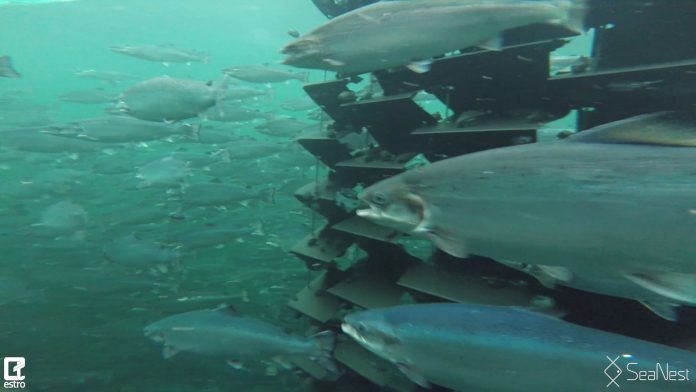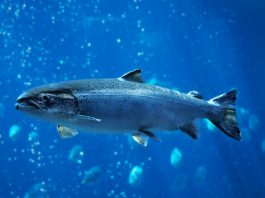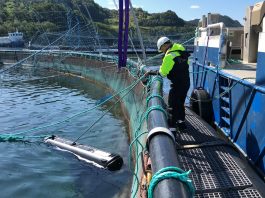The SeaNest is a unique habitat for cleaner fish, ensuring their safety and health as they work to protect our salmon from parasitic sea lice.
Cleaner fish are a crucial part of the success of the aquaculture industry and as their usage has increased so has the need to monitor and maintain good welfare practices to ensure their continued viability in the control of sea lice. The need for welfare-based solutions to the problems that aquaculture faces is not only felt in Norway but extends across Europe, as evidenced by the new partnership between Scale AQ and SeaNest to provide our products to the market in the UK.
The mission of SeaNest
Our focus at SeaNest is to provide the lumpfish, the most commonly used cleaner fish, with a habitat that allows them to hide and rest when they are not actively chasing lice. However, the use of lumpfish presents challenges beyond just allowing them to rest; the key problem is how to efficiently and humanely capture and move the fish between pens. We have developed a solution to this problem by creating a recapture unit that is easily attached to any existing SeaNest unit. Whilst the fish are resting on the SeaNest, we simply drag a net over the unit, similar to putting a sock on a foot, meaning there is no need to chase or crowd the fish together before collecting and capturing them. They simply stay hidden in the SeaNest unit and can all be secured within just 20 seconds.
The SeaNest concept emerged when we realised that cleaner fish habitats could be made better and more efficient. We saw that we would be able to develop a solution that imitates the lumpfish’s natural habitat. Furthermore, through proper design and better choice of materials, we have been able to develop a compact, reusable product that is easier to handle, substantially easier to clean, and better for the environment. Crucially, our solution enhances the wellbeing of crucial cleaner fish, in particular the lumpfish. Through in-depth research and by looking at current hides, the following main design criteria for building an efficient, comfortable hide were identified:
- The solution needs to simulate a natural lumpfish habitat, thus including shelter and plenty of smooth surfaces to attach to;
- They must be easily deployed and removed;
- There must be no loose plastic parts, what is deployed is what is removed;
- They must be quick and easy to clean using tools typically available on a standard site;
- They must be able to withstand – and not deform in – strong currents; and
- They must be constructed from a lightweight but sturdy material that does not emit microparticles into the sea and which can not only be used for several seasons but also recycled at the end of its use.
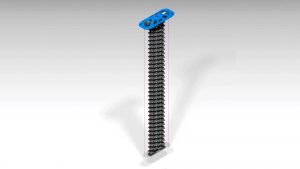
Welfare as a top priority
As a new start-up, Estro was drawn towards the fish farming industry early on as we identified several business needs that could be better served, and we believed we could provide the solutions. Problem solving is our area of expertise and, although we had no real experience within the fish farming industry, we started looking into the challenge of housing cleaner fish.
Whilst cleaner fish are of highly significant value for the industry, they are still plagued by challenges around mortality and efficiency. Furthermore, many in the industry have become increasingly aware about impending stricter regulations concerning the welfare of these hard-working fish, and we wanted to be able to help them to meet the challenges they are facing.
We began by looking at the products that the industry was already using, and it soon became clear that we could provide both the cleaner fish and the fish farms with better conditions. Once we had developed the first SeaNest prototype, the name of which is inspired by our focus on fish welfare, we saw that we were also able to offer additional environmental benefits.
Innovative Materials
To create this prototype, we began by using a plastic material which had already been authorised as safe for use in water supply systems, meaning that it will meet requirements for the reduction of pollution. We quickly came to learn that cleaner fish are likely to thrive in habitats made out of this material.
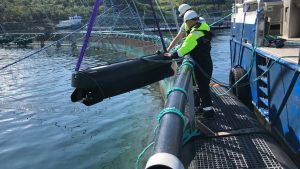
Early in the design process, we decided that the plastic sheet should be cut and folded. In a style akin to the Japanese art of origami, the folded sheet imitates the fish’s natural habitat, allowing for the creation of small caves and hiding places. It took a lot of trial and error to reach our finished product, and we are very thankful to our industry partners who have helped us along the way by testing SeaNest and providing us with valuable feedback.
The innovative swivel function, which allows the SeaNest to move naturally with the current of the water, is one of the key examples of how important our collaboration with the industry has been in creating the best possible product to suit their needs.
The Further impact
In addition to enhancing fish welfare, we have also developed a product which gives fish farm employees far better working conditions. This is because SeaNest is easy to handle, takes up little space when stored away, and – according to customers – can stay in the sea for a longer period without maintenance reducing the strain on employees. This, coupled with the fact that the cleaning process is much easier than with traditional habitats, means that those working on the fish farms have more time to spend on other important tasks.
The product has been a success, but the job is far from done. We are constantly working on creating new innovative solutions to the problems the aquaculture industry faces whilst always putting fish welfare at the forefront.
Please note, this article will also appear in the seventh edition of our quarterly publication.

